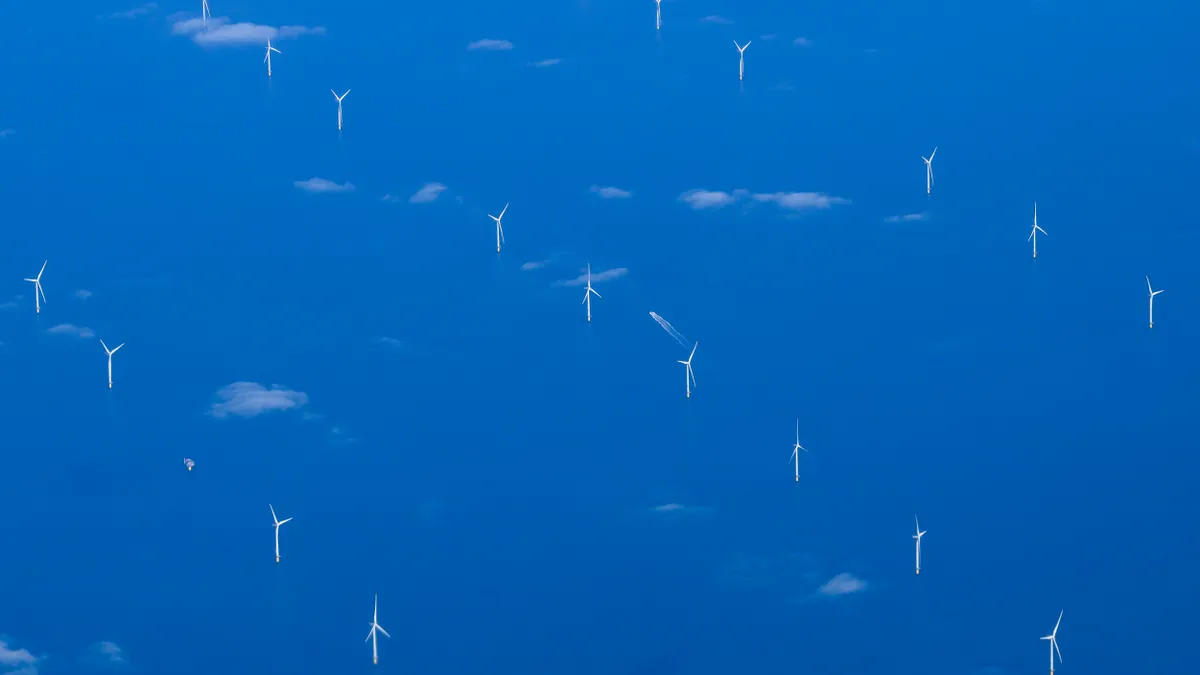Dive Brief:
- Equinor and BP became the most recent U.S. offshore wind developers to terminate a project contract, announcing Wednesday that they had reached an agreement with the New York State Energy Research and Development Authority to exit their Offshore Wind Renewable Energy Certificate, or OREC, agreement for the 1.2-GW Empire Wind 2.
- Avangrid and Copenhagen Infrastructure Partners announced the same day that their 800-MW Vineyard Wind 1 project has begun delivering power to the grid. CIP said the developers expect the project to have five turbines operating at full capacity by early this year.
- “The news on offshore wind seems to be coming fast and furiously, with each fantastic project milestone matched with news of another troubled project,” said Anne Reynolds, the executive director of the Alliance for Clean Energy New York.
Dive Insight:
Reynolds said that there are clearly “growing pains” in the U.S. offshore wind industry, as some projects are delayed or canceled while others reach major milestones on the road to connecting utility-scale offshore wind farms to the grid.
Equinor said that Empire Wind 2’s agreement had been terminated due to “changed economic circumstances on an industry-wide scale,” but added that the termination “repositions an already mature project to continue development in anticipation of new offtake opportunities.”
Inflation, interest rates and supply chain disruptions made the existing OREC agreement nonviable, Equinor said. Last year, several other developers cited these same economic pressures when exiting contracts or canceling projects entirely.
“What will matter over the long term is public policy commitment to bringing this industry, its construction jobs, and its clean megawatt-hours to the Atlantic, plus bolstering the supply chain to eliminate project risks from that angle,” Reynolds said.
Along with Vineyard Wind, several other wind farms are expected to reach completion early this year. In November, the first turbine was installed at the 130-MW South Fork Wind farm in New York, and the project became the first utility-scale wind farm to deliver power to the grid in December.
“2023 was a historic year for offshore wind defined by steel in the water and people at work,” Avangrid CEO Pedro Azagra said in a release. “Today, we begin a new chapter and welcome 2024 by delivering the first clean offshore wind power to the grid in Massachusetts.”
In July, Avangrid agreed to pay $48 million in penalties to three Massachusetts utilities after exiting contracts for Commonwealth Wind in order to rebid the project during a new solicitation.
New York announced an expedited offshore wind solicitation in December which includes developer-friendly provisions like an expedited bid process and waived termination fees — meaning that Empire Wind 2’s developers could rebid in the next round and secure a better contract without having to pay a penalty.
Fred Zalcman, director of the New York Offshore Wind Alliance, said the group is “disappointed” but “not entirely surprised” by Equinor and BP’s decision to suspend their purchase and sale agreement for Empire Wind 2, given the economic turmoil the industry has faced.
“That said, this decision allows the project developers to reset and eventually re-enter the market with a more sustainable business case, while also freeing up space for other market entrants,” said Zalcman.















